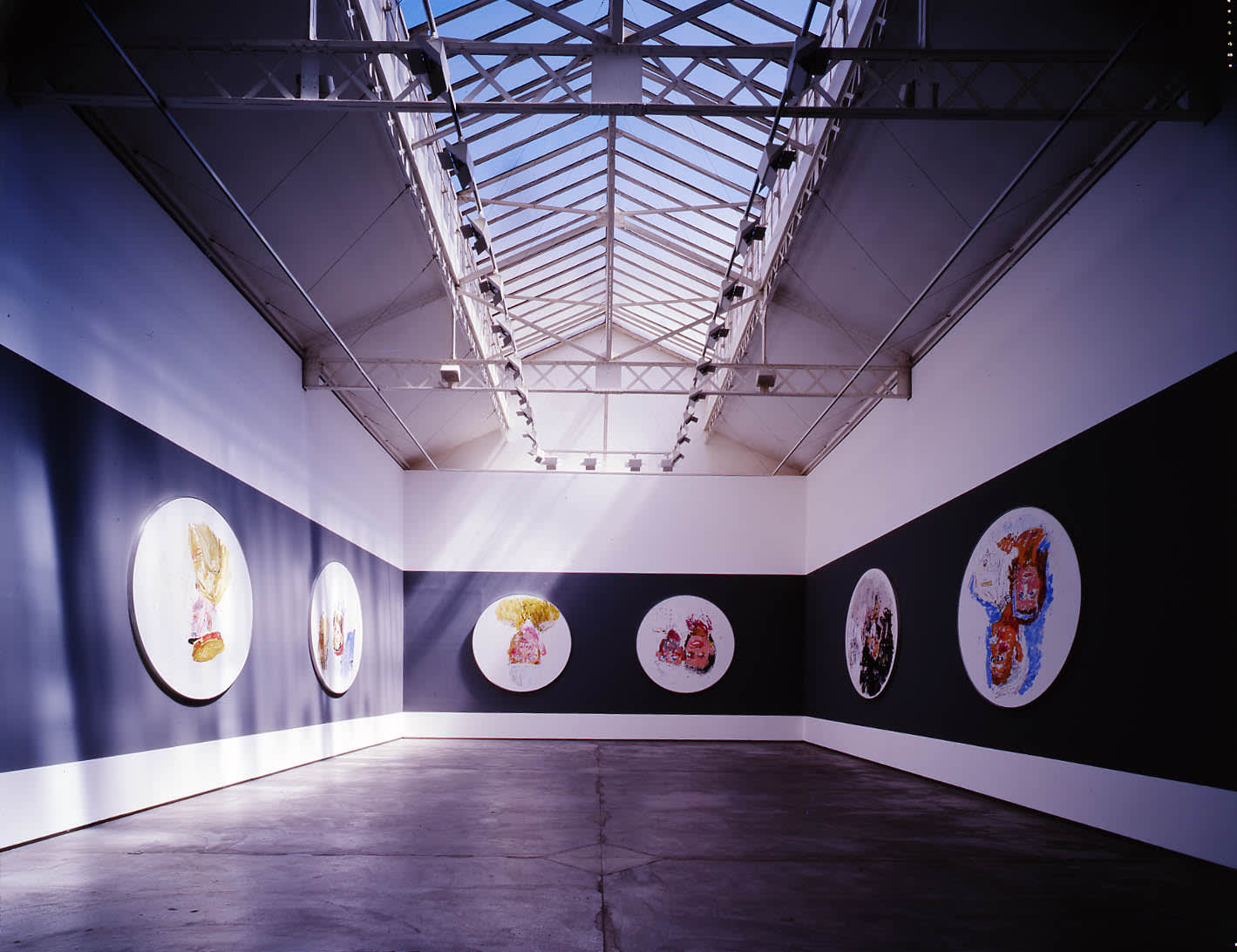Overview
With the 12 new round paintings, which were all executed in the summer of 2001 and do come after the triangular canvases using images taken from the Soviet cinema of the 1930s to 1950s, we can see that Baselitz`s answer has substantially remained the same, in that a painting is something that allows you to enter into conversation with yourself and to establish a link with the past.
The Galerie Thaddaeus Ropac is pleased to be showing from 1st June to the 27th July an exhibition of new paintings and drawings by Georg Baselitz, entitled Meine Neue Mütze.
With the 12 new round paintings, which were all executed in the summer of 2001 and do come after the triangular canvases using images taken from the Soviet cinema of the 1930s to 1950s, we can see that Baselitz`s answer has substantially remained the same, in that a painting is something that allows you to enter into conversation with yourself and to establish a link with the past.
The Russenbilder became increasingly important during 1998. This was related to Baselitz`s completion of his Bildübereins, a major kaleidoscopic suite comprising 39 large-format pieces, in 1995. This was when Georg Baselitz started to look to the past, one that would enable him to move forward. Baselitz paint in order to have a past, to make it visible with the idea that "everything that is behind the painter is also ahead of him". What he wanted was to rediscover his material, the material that had already been there, subjacent, and put it to the test in a process of transformation that now took on a surprising magnitude. The oil painting became more fluid, the working technique grew closer to that of watercolour. The intensity of the colours was also changed and the drawing became like Oriental style calligraphy in ink.
In all of these paintings, what Baselitz did, was to put aside the angular forma and put the character in the middle, as if he were coming up from a basement. The canvas was then cut into a round shape and the motif surrounded with white banderoles. This format proved well suited to the Russian motifs because it made for greater lightness when the canvas was hung on the wall. The signification loses its weight, giving way to a more decorative dimension, and becomes almost forgotten.
For all this propaganda material, the circle, which is static - Zeitlos, if you will – transforms the progressivist narrative model, which itself uses angles and creates vectors.


















































































































































































